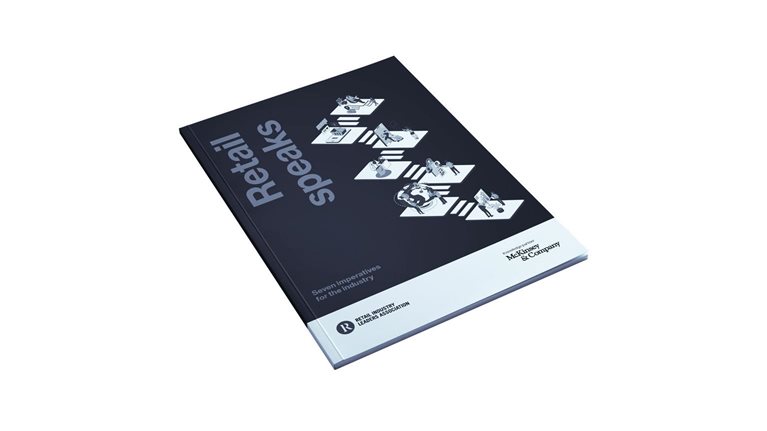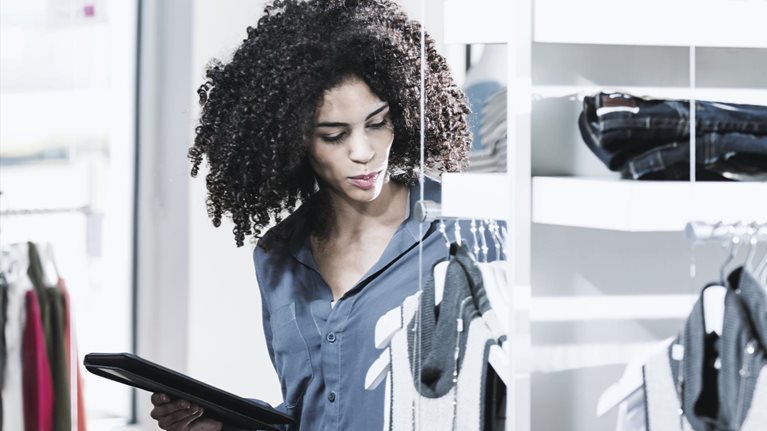The seemingly unstoppable rise of e-commerce, sophisticated customer analytics, personalized sounds and smells, digital mannequins that “know” your clothing preferences, automated home delivery—these are just some of the elements that will shape the shopping experience in the coming years. Listen as four McKinsey leaders share their perspectives on the future of retail.
The ‘phygital’ shopping experience
Eric Hazan: We are entering the world of “phygital”—physical and digital at the same time, where there is not a physical world or digital world in retail, but rather a completely connected one.
Praveen Adhi: Traffic in stores is almost certainly going to be down permanently. As you see the shift to e-commerce, whether it’s five, ten, or 15 points, some portion of your customers are not coming back in the store or not coming back at the same frequency they used to. So being able to maximize the value of each trip is going to be incredibly important.
Kelsey Robinson: For a customer walking into a store in 2030, I think it will feel really integrated—meaning, affirmations from social media or friends and family who aren’t even near me will somehow be integrated into that store.
Sajal Kohli: A lot of the resource investment—both human capital and capital expenditure in dollars—needs to shift away from opening new brick-and-mortar stores and toward putting it into technology.
Eric Hazan: More than 30 to 40 percent of cosmetics in Asia are being sold online. This will expand even more in the future. So, ten years from now, for certain product categories, the main part of the sale will be online, and you will only have flagships—for “showrooming”—in physical retail.
A store designed just for you
Kelsey Robinson: I think in 2030, shopping will feel incredibly personalized. It’ll feel like the sales associates in that store know me as well as a close friend or maybe as well as a personal stylist.
Sajal Kohli: As soon as I go in, they’ll know exactly when I was there last and, therefore, what my replenishment needs would be. And all [the store] will do is a confirmation of, “Here’s what must be out at home. Should we just reorder it for you?” But that’s not the main reason I would go to the store, because I could do that off my mobile device, right? The reason I would go in is because they would actually draw me in by saying, “New products, new brands, just for you, customized, personalized. Come have a look.”
Eric Hazan: If you don’t invest in analytics, if you don’t invest in personalization, the barriers to entry that others will build will be too high.
Praveen Adhi: There are companies out there that are personalizing the sounds you hear in the store and the scents that you smell. They’re personalizing what the associates know about you to help you find the right product more quickly. You’re going to see digital mannequins that quickly change what they’re wearing based on who you are and what you might be holding in your hand. You’ll see a lot more in-store experiences to help you engage with the product, touch and feel it, and get to know it. But when you go to buy the product, you might not just be grabbing it off the floor and walking out the door like you do today. It might be coming out of the back room, it might meet you in your car, or it might meet you at home.
Kelsey Robinson: I also think personalized fulfillment is a 2030 concept that might even come earlier: How do I, as Kelsey, want to have my products delivered, and how does a retailer actually know that in advance and get them more quickly to the exact door or location, either through their own channels or through partner channels?

The future of shopping: Technology everywhere
Sustainability, community, fun
Eric Hazan: In certain countries—say, a few countries in Europe—almost one-fourth of consumers would basically change stores if they didn’t think that the products they have in front of them were sustainable. The preoccupation with and focus on hygiene, organic products, and sustainability are much more important than before. So it’s another layer of complexity for retailers.
Kelsey Robinson: Is a store just about a transaction? Or is it a place where I can offer community and experiences that are aligned with my brand—everything from a fitness class to meeting local talent or local bands?
Praveen Adhi: As customers get used to shopping online, what’s going to make them come to the store? How do you think about driving engagement with the brand, driving product knowledge, making it a fun experience, and removing all the friction in that experience?
Sajal Kohli: You’ve got to think about: What are the different axes of creating experience? What is your value proposition going to be? What will be the basis of your differentiation that will be the real reason why consumers will be loyal to you versus not?
Kelsey Robinson: Don’t try to win on every single element of the consumer experience. Pick the couple of areas where your brand can really stand out.





